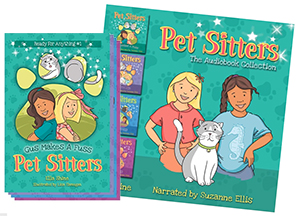Are you watching your kids do absolutely anything to avoid reading and finding yourself with a growing sense of despair? Ever wondered why it’s so hard when learning to read is so important?
We all know learning to read is important. But sometimes, as parents trying to help our children read, we can feel like failures!
We see our children struggling to sound words out. We watch them do absolutely anything to avoid reading and we find ourselves with a growing sense of despair. We know all too well that you can’t nag a child into loving books. If learning to read is so important, why is it so hard?
I think part of the problem is that reading really is a challenging skill to master. I remember when I was at university, training to be a teacher. Our lecturer held up a set of symbols and attempted to teach our class to “read” them. She insisted the word she was holding was an easy one, that the symbols on her cards spelled the word dog. Couldn’t we all see that?
Well, no, we couldn’t. The symbols were not letters we were familiar with. It felt like we were deciphering a secret code. We struggled and stumbled and got incredibly frustrated.
“See,” she said to us. “Never assume learning to read is simple.”
I’ve remembered that lesson a lot over the years, and it’s helped me think carefully and gently about how we can encourage, support and set our kids up for success as readers. Yes, learning to read is hard. There are sight words and sounds, blends and patterns. We expect fluency and intonation and understanding. And yet, when a child or adult learns to read, it is a skill that opens up the world, both practically and for the imagination!
So how do we encourage our children to become readers? How do we support them as they tackle the hard parts of reading, without a sense of failure and despair?
In my experience, I’ve found five secret weapons we can utilise in helping reluctant readers make progress in this area. And before you think it requires something elaborate, they’re actually surprisingly simple. Hang on for secret weapon #3 as I suspect it may not be something you expect.
1. Relax and make reading fun again
Whether our kids are learning their very first sight words, or attempting yet another home reader, reading can frequently feel intimidating. Instead of adding pressure to your child’s reading time, make reading fun again. Be the person who cheers them on (let their teacher do the correcting). Play games with sight words, choose fun stories to read and remember that different children learn at different speeds. It is okay to take a while learning this important life skill. The best thing a parent can do is relax along the journey and sprinkle the reading experience with fun!
2. Read to your child as often as you can
One great way to bring fun back into reading is to read to your child. Instead of always expecting them to read by themselves, change things up and read to them. As often as you can, take the time to choose a good book and read to your child. Choose your favourite stories, choose new ones, choose books your child has begun reading but never finished. Reading isn’t just about the mechanics of “how to”, it’s also about experience with words, language and story! Reading to your child allows them to experience these benefits of reading and learn to love it, without the hard work. And it’s great for building strong relationships.
3. Use audiobooks
Audiobooks are a fantastic resource for supporting reluctant readers. They allow children opportunities to engage with a story and are also transportable. You can take audiobooks anywhere: On holidays, to Gran’s place, on the drive to school. And you can partner them with a physical or ebook to allow a guided reading experience supporting the child’s emerging reading skills. To make the most of the guided reading experience, choose audiobooks with matching print/ebooks that are at your child’s reading level or a little higher.
4. Join the library and role model reading whenever you can
Some kids don’t like reading because they think it’s “boring”. But this may simply be because they haven’t found the type of books they are interested in yet. Make the most of your local library. Sign your kids up so they have their own library cards and model wide reading practices for them. Most libraries have a collection of readers that cater for various levels of reading, but it’s also good to encourage kids to browse and select books based purely on interest even if they are “too hard” for them to read just yet.
5. Double check for additional issues
If your child is really struggling at learning how to read and showing little or no progress, you may need to dig a little deeper. Conditions such as dyslexia (or Irlen Syndrome), learning difficulties or sight impairments may be hindering your child’s attempts at reading, despite everyone’s best efforts. Seek professional advice on the best way to support your child. Keep the pressure off and continue to celebrate and enjoy reading experiences together—even if you (or the audiobook) are doing most of the reading. These continued activities will build vocabulary and familiarity with reading processes so that when the supports are in place, your child will have confidence and motivation to engage with reading as they are able.
Converting your child who hates reading
If you are the parent of a reluctant reader, take heart. Keep at it. You are not a failure. Just remember to prioritise the love and enjoyment of reading first, and keep up the good work supporting, encouraging and inviting your young reader into the joy they can find in books.

Penny’s most recent books, the Pet Sitters series (written with Cecily Anne Paterson), are a series of chapter books for six- to nine-year-olds and were written with reluctant readers in mind. The series is available now in ebook, audiobook and print formats.
How helpful was this article?
Click on a star to rate it!
5 / 5. 2
Be the first to rate this post!
Penny Jaye - author
Related posts
Subscribe
Receive personalised articles from experts and wellness inspiration weekly!

